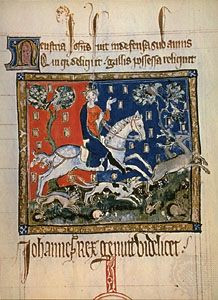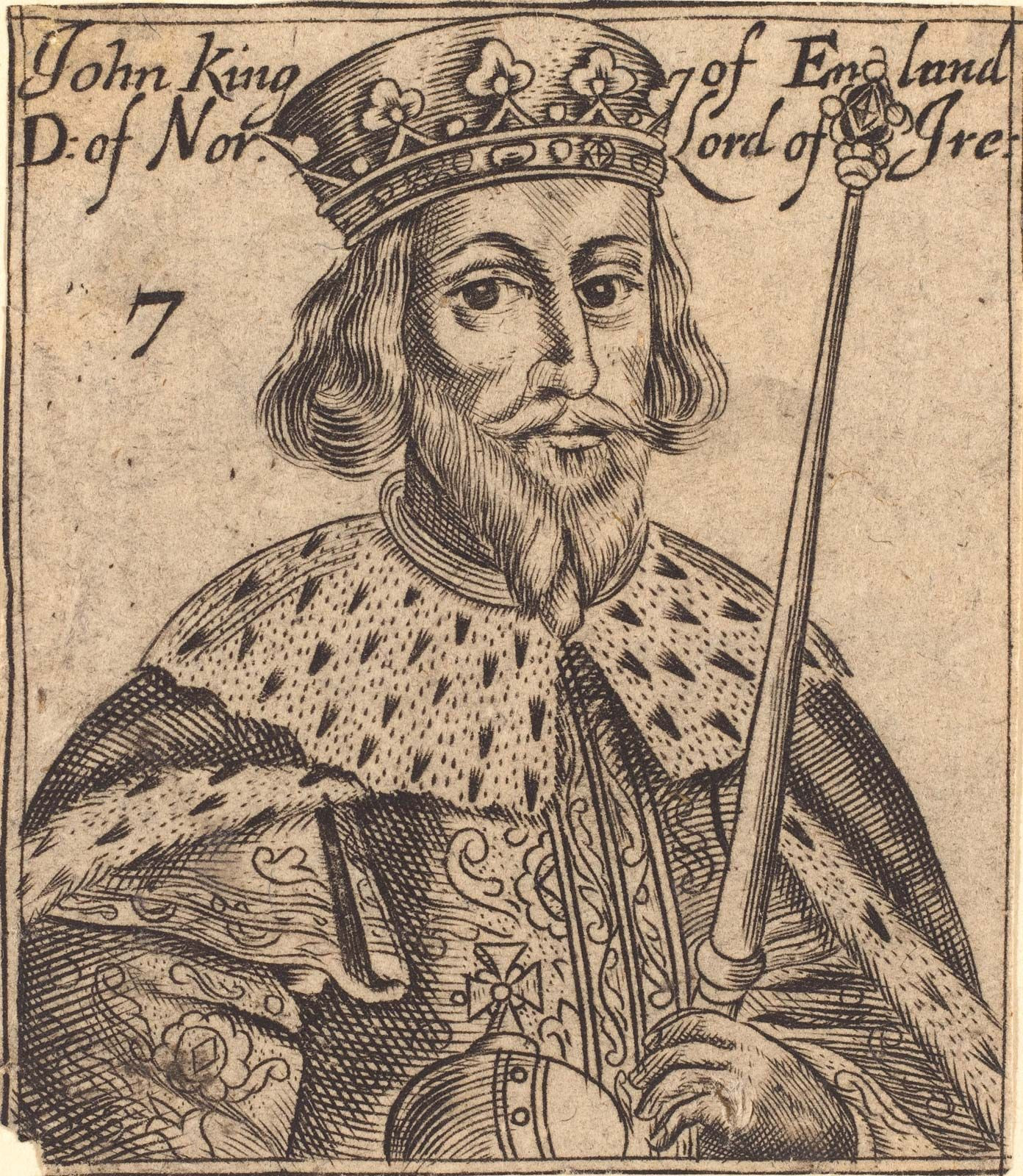King John of England, often remembered as one of the most controversial monarchs in English history, reigned from 1199 to 1216. His rule was marked by significant conflicts, both abroad and at home, that ultimately reshaped the English monarchy and left a lasting legacy. Best known for the loss of vast Angevin territories in France and the forced signing of the Magna Carta, King John’s tumultuous reign continues to fascinate historians and shape our understanding of medieval England.
Early Life and Rise to Power
Born around 1166, John was the youngest son of King Henry II and Eleanor of Aquitaine, a formidable royal couple. Being the youngest, he was often referred to as “Lackland” as he was not initially expected to inherit significant territories. Despite this, John became a favorite of his father, Henry II, which stirred resentment among his elder brothers, including the future King Richard I, known as Richard the Lionheart. Henry II’s attempts to secure lands for John through marriage and grants were met with resistance from his other sons, leading to early familial and political tensions within the Plantagenet dynasty. In 1177, John was granted the Lordship of Ireland, marking his first significant political role. However, his initial visit to Ireland, from 1185, was marred by youthful indiscretions and political missteps, earning him a reputation for recklessness that would unfortunately follow him throughout his life. Despite these early setbacks, his father’s continued favor positioned him for future prominence.
 Illuminated manuscript depicting a young King John of England
Illuminated manuscript depicting a young King John of England
Accession to the Throne and Early Reign
The path to the throne for King John was far from straightforward. When King Richard I died in 1199, the traditional rules of succession were not firmly established. While his nephew, Arthur of Brittany, could claim the throne through representative succession, John, as Richard’s brother, asserted his right to rule. Securing the Duchy of Normandy and subsequently the crown of England in May 1199, John faced immediate challenges to his legitimacy, primarily from Arthur, who was supported by King Philip II of France. Initially, Arthur was recognized as Richard’s heir in Anjou and Maine. However, through strategic negotiations and concessions outlined in the Treaty of Le Goulet in 1200, John managed to gain recognition as the successor to all of Richard’s French possessions. This treaty, while solidifying his claim, came at a cost, requiring financial and territorial concessions to Philip II, setting the stage for future conflicts.
 Portrait of King John of England in regal attire
Portrait of King John of England in regal attire
Conflict with France and Loss of Continental Territories
King John’s reign is perhaps most notably marked by the dramatic loss of vast English-controlled territories in France. A key catalyst for renewed war with France was John’s second marriage to Isabella of Angoulême in 1200. His annulment of his marriage to Isabella of Gloucester and subsequent marriage to Isabella of Angoulême, who was already betrothed to Hugh IX de Lusignan, ignited a rebellion among the Lusignans. Appealing to King Philip II of France, the Lusignans provided Philip with the pretext to summon King John to his court, a summons John ignored. This defiance led to war, and despite initial successes, such as the capture of Arthur of Brittany in 1202, John’s fortunes quickly turned. By 1204, Normandy was lost to the French crown, followed by Anjou, Maine, and parts of Poitou by 1206. These losses were a major blow to English prestige and significantly diminished the Angevin Empire, fundamentally altering the political landscape of Western Europe. Historians point to a combination of factors for these failures, including superior French resources, the overextension of English and Norman resources, and perhaps strategic missteps during John’s campaigns.
The Magna Carta and Domestic Unrest
The loss of continental territories had profound consequences for King John’s rule in England. Forced to focus more intently on his English kingdom, John implemented ruthlessly efficient, albeit unpopular, methods of financial administration to fund his attempts to regain lost lands and consolidate his power. These measures included aggressive taxation, increased exploitation of royal forests, and stringent enforcement of feudal prerogatives. These policies, while effective in raising revenue, fueled growing discontent among the English barons. This discontent culminated in open rebellion, forcing King John to negotiate with his barons at Runnymede in 1215. The result of these negotiations was the Magna Carta, a charter of liberties that stands as a landmark document in the history of English law and constitutionalism.
Significance of the Magna Carta
The Magna Carta, or “Great Charter,” was a groundbreaking document that sought to limit royal power and protect the rights of the English nobility. While initially intended to address the grievances of the barons, its principles have had a far-reaching impact, influencing the development of common law and constitutional government around the world. Key clauses addressed issues such as due process, limitations on taxation without consent, and access to justice. Although King John himself sought to evade its constraints and the Magna Carta was quickly annulled by the Pope, it was reissued in subsequent reigns and became a cornerstone of English liberties.
Conclusion
King John’s reign remains a pivotal period in English history. While often viewed negatively due to his territorial losses and tyrannical tendencies, his reign also gave rise to the Magna Carta, a document that, despite its immediate context, has become a symbol of liberty and the rule of law. His controversial legacy continues to be debated, but his reign undeniably shaped the future of the English monarchy and its relationship with its subjects, leaving an indelible mark on the course of history.
